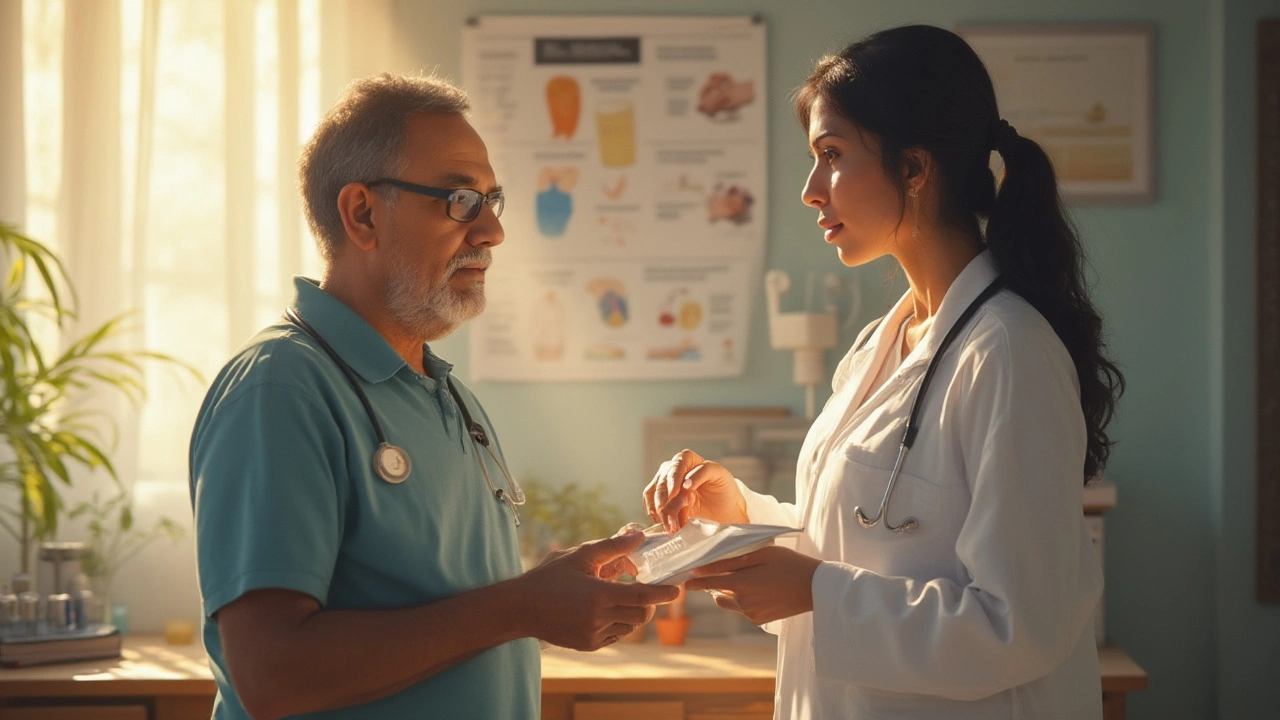Number One Diabetic Pill – What You Need to Know
If you’ve searched "number one diabetic pill" you’re probably looking for a drug that works well, costs less, and has few side effects. The truth is, no single pill fits everyone. What matters is how the medicine matches your blood‑sugar level, lifestyle, and health history. Below we break down the practical points you can use right now to decide if a pill is right for you.
How to Choose the Right Pill
Start with your doctor’s advice. They know your A1C, other meds, and any kidney or heart issues that could change the game. Ask them why they prefer one drug over another – common choices include metformin, sulfonylureas, DPP‑4 inhibitors, and GLP‑1 analogues. Each class works a bit differently:
- Metformin lowers sugar made by the liver and is cheap, but it can upset the stomach for some people.
- Sulfonylureas push the pancreas to release more insulin. They’re effective but can cause low blood sugar if you skip meals.
- DPP‑4 inhibitors are easy on the stomach and have a low risk of hypoglycemia, though they cost more.
- GLP‑1 analogues help you lose weight and lower sugar, but they’re injections and pricier.
Next, look at side‑effects. If you have a history of digestive problems, avoid metformin’s high‑dose forms. If you’re prone to low blood sugar, stay away from strong sulfonylureas. Keep a list of any other medicines you take – some diabetes pills interact with blood thinners, antibiotics, or cholesterol drugs.
Cost matters too. Generic versions of metformin and sulfonylureas are usually under ₹500 per month, while brand‑name GLP‑1 drugs can exceed ₹10,000. Check if your insurance covers the pill, and ask the pharmacist about discount cards.
Common Myths About Diabetes Medication
Myth 1: "If a pill is cheap, it can’t be good." Cheap drugs like metformin have been used for decades and stay cheap because they’re off‑patent, not because they’re ineffective.
Myth 2: "All diabetes pills cause weight gain." Only a few, like some sulfonylureas, may cause a slight gain. GLP‑1 analogues often help you lose weight, and metformin is weight neutral for most people.
Myth 3: "You can stop taking the pill once your sugar is normal." Diabetes is a chronic condition. Stopping medication usually raises blood sugar again. Lifestyle changes help, but most people need ongoing treatment.
Myth 4: "Natural herbs can replace pills." Some herbs lower sugar a little, but they’re not a substitute for proven medication. Mixing herbs with prescribed pills can cause unpredictable effects.
Finally, track your progress. Use a simple log – date, pill name, dose, blood sugar reading, and any side effects. Share this with your doctor every few months. Adjustments are normal, and staying proactive keeps you on the right track.
Bottom line: the "number one diabetic pill" is the one that fits your body, your budget, and your doctor’s plan. Focus on safety, effectiveness, and how it feels day‑to‑day. With the right choice, you’ll keep your sugar steady and live a healthier life.





